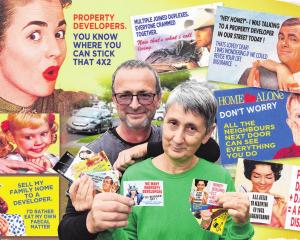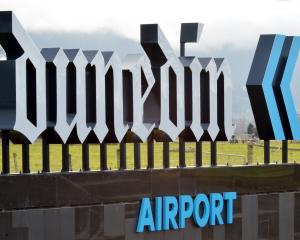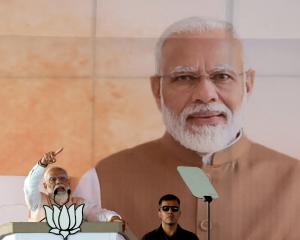Gregory Dawes, of Dunedin, sees the use of ''open source'' as the best way to bridge the deepening digital divide.
The world of technology is changing dramatically. Smartphones and tablets have transformed the ways we communicate and connect to the web. There are now serious discussions about whether the traditional PC - the desktop or laptop computer - has a future. Even if it has, it will be just one of the many forms of information technology that will populate our future.
With this new technology, however, comes a danger. Like ultra-fast broadband, which will be available to those who can afford it, it might merely deepen the digital divide, the gap between those who can pay for the technology and those who cannot. In particular, these new devices are in danger of locking people into a proprietary system they are unable to leave. This will condemn them to a treadmill of software and hardware updates which many individuals and organisations will be unable to afford.
Let me illustrate the danger by reference to Apple products. Apple has become one of the most successful companies in the world. It has done so not only by offering attractive devices, but also by building these into a digital ecosystem. Users of Macbooks, iPhones, and iPads are encouraged to buy their music from iTunes, to store their data in the iCloud, and to co-ordinate their activities using the iCalendar. But while this may seem wonderful, it is difficult to transfer any of these activities to a non-Apple device. What Apple has created, in other words, is a ''walled garden'' that is both beautiful and difficult to leave.
Nor is this unique to Apple. While Microsoft programs could traditionally been installed on a great variety of machines, this situation has begun to change. Microsoft is now producing its own machines and beginning to restrict what can be done on those devices. They have learned all too well from Apple's success. Locking people into your system is what produces profits.
Added to this is the problem of planned obsolescence. It has become increasingly difficult for owners of older devices to upgrade to newer versions of their programs. Computers might still be upgradeable for four or five years after purchase, but mobile devices (such as the iPhone or iPad) may be upgradeable for only 18 months or two years. After that, the only option is to purchase a new device, at least if you want the latest applications.
The key problem here is the operating system. An operating system is the software that communicates between your hardware (the machine itself) and your programs (such as Microsoft Word). (If you can kick it, it's hardware; otherwise, it's software.) Microsoft Windows and Apple OS X are both operating systems. New versions of these operating systems often make increased demands on their hardware so that they run sluggishly (if at all) on older machines. What happens as a result? Users very quickly decide that they need a new computer.
This may be harmless enough for individuals or organisations who can afford to finance this rather expensive habit. But those who cannot will quickly get left behind. At least one school in Dunedin requires its pupils to have an Apple Macbook computer. That's fine for the families who can afford to pay out $1900, perhaps twice during their children's time at school. But many families cannot. The same is true of the schools themselves. Schools with wealthy parents can have wonderful IT facilities. But many of our schools are littered with old computers that scarcely operate and that they cannot afford to replace.
Is there an alternative? There most certainly is. My main home computer is nine years old. It runs beautifully. The reason it runs so well is that I'm using Linux Mint, which is an open-source operating system.
What is ''open-source'' software? It consists of programs that do not come merely as pre-packaged bundles, ready to install on your machine. They also provide access to the source-code that was used to write them. Most of us cannot read or alter that code, but many people can. They are free to adapt the software, to fix it when it goes wrong, and to share their solutions with others. In addition to this, most open-source software is available free of charge. It can even be given away to friends. In the open-source world, sharing is not regarded as ''piracy''. It is encouraged.
Why, then, are more of us not using it? Well, most of us already are, at least when we go on the web. The majority of websites, including Google and Amazon, use versions of the Linux operating system. If you use Firefox as a web-browser, you already have at least one open-source program on your own computer. But most people use open-source programs on machines running the Windows or Apple operating systems. Few of us have broken free from the domination of Apple and Microsoft. Why is this?
The main reason is that most computers come with Microsoft or Apple operating systems pre-installed. It takes an effort to replace them with Linux. It also takes a little effort to find your way around this new system. Many familiar programs, such as Word, can be used on Linux, although it takes a little work. But there are excellent open-source alternatives, such as LibreOffice, which I am using to write this column. Once you have become accustomed to open-source programs, you will be astonished at how well they perform, often better than their proprietary counterparts.
More importantly, open-source software is our best hope for bridging, rather than deepening, the digital divide. Our local Warrington school has led the way, by almost entirely abandoning proprietary software. They use the Ubuntu Linux system, which has a version specially designed for educational use. Wouldn't it be wonderful if other organisations and individuals were to follow their example?
- Gregory Dawes is an associate professor in the department of philosophy and religion at the University of Otago.












